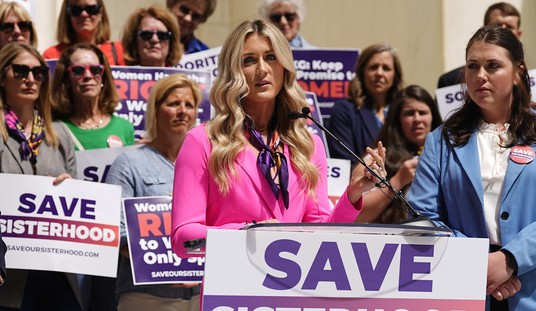=========
=========
Promoted from the diaries by streiff. Promotion does not imply endorsement.
=========
=========

Ignorant of history, the gun-grabbing Left never lets us down whenever there is some tragedy involving a gun. Google “repeal the Second Amendment” and you get almost 2.5 million hits. If anything, this illustrates the stupidity and ignorance of those espousing those ideas.
While still British subjects, colonial Americans recognized the “right to bear arms” as a natural right. These are rights granted by God or nature that cannot be restricted by any government or official. The concept did not begin with the Bill of Rights, but was enforced in the psyche of 18th century colonists and rooted in English history from whence they came. During the Middle Ages and through the 17th century, every Englishman was not only allowed to own a firearm, but they were expected to own one. The individual right to own a gun had been settled in 1689. Further, it was understood that this referred to an individual, not a collective right as some argue. The British Declaration Bill of Rights in 1689 listed among other grievances, the British throne’s violating the individual right to own firearms. From contemporaneous notes from Parliament, the debate centered on the 1662 Militia Act which focused on the confiscation of private arms.
Hence, the 1689 Declaration did not create a new individual right. It recognized a previously established natural right and it specifically addressed the individual right to bear arms. Parliament, in fact, specifically considered and rejected any language about a “common defense,” or collective right. The great British legal authority, Blackstone, described the right as absolute and belonging to the individual. It had both a collective purpose (common defense) and an individual purpose (self defense), but the collective purpose could not be realized absent the individual purpose.
It is no surprise that the first battles of the American Revolution occurred because the British attempted to confiscate the firearms of the colonists at Lexington and Concord. The Declaration of Independence states there are inalienable rights to “life, liberty and the pursuit of happiness.” This necessitates the right to own guns to secure both life and liberty. And before the Second Amendment, English common law adopted in the colonies dictated private ownership of firearms.
This fact also has its legacy in many state constitutions that pre-date the Bill of Rights. In Pennsylvania, for example, their constitution specifically stated “the people have a right to bear arms for the defence of themselves and the state.” Other state constitutions evoked the right for self defense also. In fact, nine state constitutions adopted in the 18th century or early 19th century noted the right to bear arms for “self defense.”
During the ratification of the Constitution debates, Madison assured the people had no fear of the new government given their right to bear arms. Hamilton warned the real danger to liberty was the government ever depriving one of the right to bear arms citing the “original right of self defense.” Richard Henry Lee actually demanded that all citizens be armed. George Mason said the best way to enslave citizens was to disarm them. Patrick Henry fought hard given the lack of a guarantee to “bear arms.” New York, New Hampshire and Virginia ratified expressing an individual right to bear arms being a prerequisite. North Carolina and Rhode Island held out until it was guaranteed by amendment. Pennsylvania and Massachusetts fought to have the right enshrined in the body of the Constitution.
James Madison, who got the ball rolling on the Bill of Rights, originally intended to insert the right to bear arms in Article I, Section 9 between Clauses 3 and 4. This section deals with individual rights. If he intended the right to bear arms to be a collective right, it would have been inserted in Article I, Section 8 describing Congress’ powers over the militia. In fact, that originally worded amendment by Madison stated: “that the right of the people to keep and bear arms shall not be infringed, a well-armed and well regulated militia being the best security of a free country; but no conscientious objector shall be compelled to render military service in person.” Put another way, the final version simply reversed the operative and prefatory clauses. Further, Madison’s notes show that when introducing the amendment, he fully intended to characterize it as an individual right. During Congressional debate, the Senate rejected language involving the “common defense.”
The final version specifically states “the right of the people.” In only two other instances do we see this language in the Bill of Rights or Constitution- the First Amendment’s Assembly and Petition Clause, and the Fourth Amendment’s Search and Seizure Clause. Again, both, like the final language of the Second Amendment, refer to individual rights.
We have historical evidence of how the counter argument- the right to bear arms is a collective right- would operate in the United States. That argument contends that the opening clause spells out the intentions of the Amendment and it ends there. It asserts the right is a state right to be used for state purposes, namely “a well regulated militia.” This infers that a state can regulate guns however it sees fit up to and including confiscation. That historical evidence is rooted in the ugliness of the aftermath of the Civil War when many former Confederate states enacted Jim Crow laws, the rise of the KKK and the denial of the right to own guns to newly freed slaves. For awhile, the South was indeed everything a free American should fear.
So its no surprise that Ida B. Wells, a prominent black journalist, champion of civil rights and one of the founders of the NAACP wrote:
…a Winchester rifle should have a place of honor in every black home, and it should be used for that protection which the law refuses to give…
She was stating a truism. Firearms were a great equalizer against a capricious state.
Given these historical facts, which the Left conveniently ignores, it become obvious that the Second Amendment is not some old relic of the 18th century. It is timeless since it codifies a natural right. Nor is it “unclear” as some detractors claim. The wording is rather explicit and obvious to all but the ignorant. Nor is it an “embarrassment” as others claim since nothing as fundamental as a natural right is “embarrassing.”
But, given the Left’s animus to other fundamental rights like free speech, free assembly (except on their terms) and the free exercise of religion, it comes as no surprise that they would show animus to the fundamental right to bear arms.













Join the conversation as a VIP Member